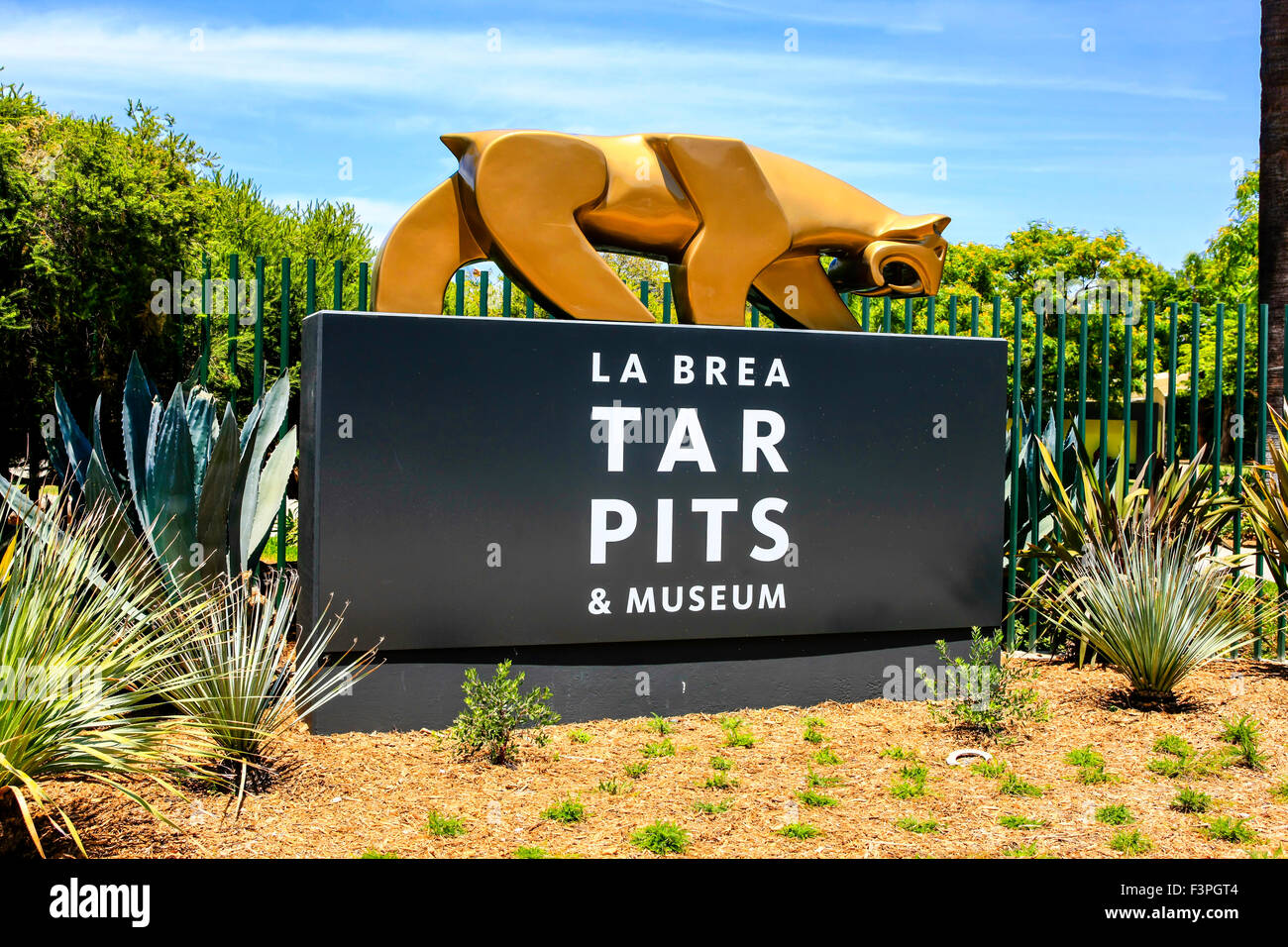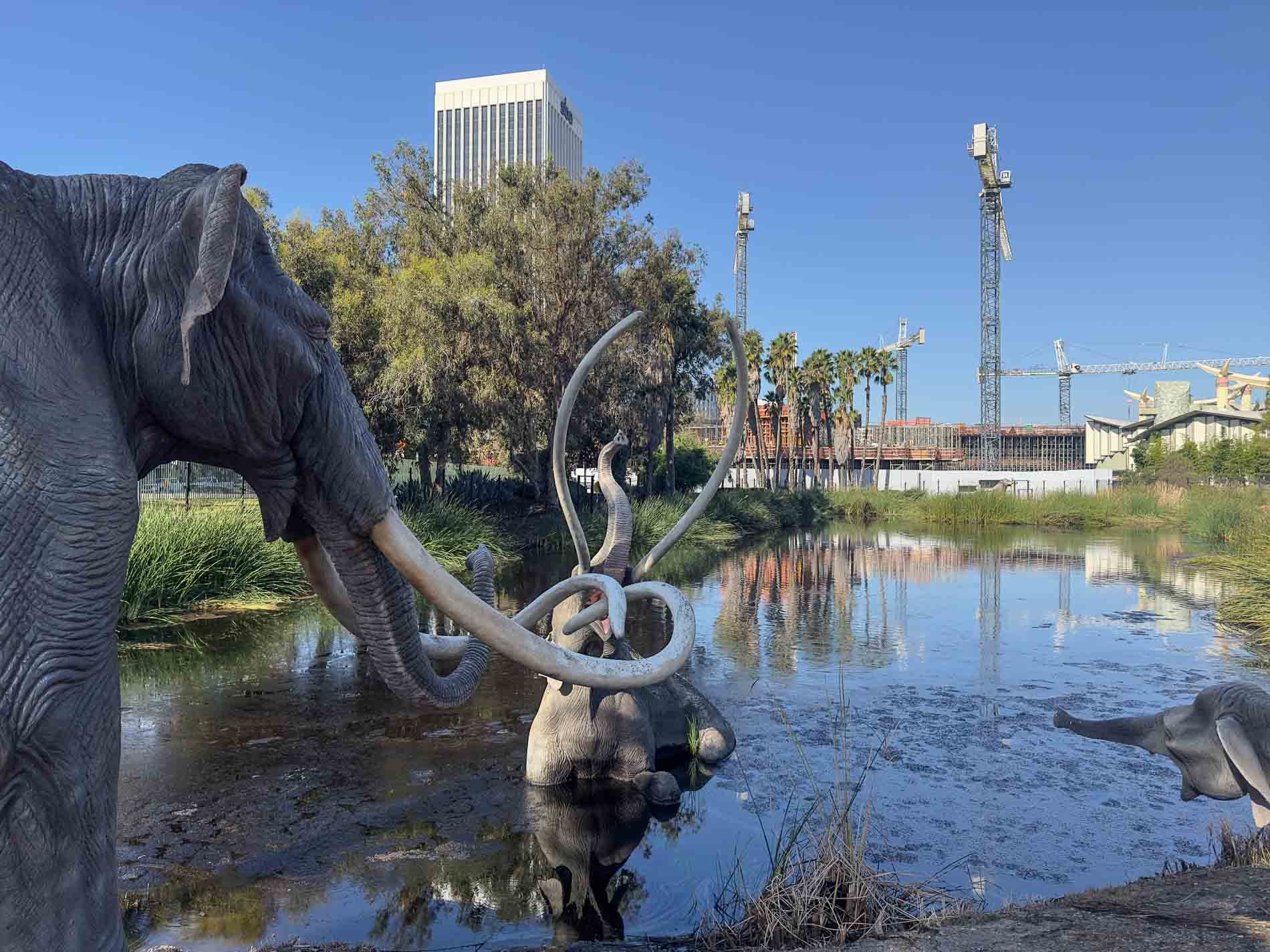La Brea Tar Pits and Museum Excavator Tour: Obtain an Insider's View
La Brea Tar Pits and Museum Excavator Tour: Obtain an Insider's View
Blog Article
Unearth the Interesting World of Glacial Epoch Animals at the La Brea Tar Matches and Gallery in LA

Background of the La Brea Tar Pits
The background of the La Brea Tar Matches go back thousands of years, showcasing an unique natural sensation that has captivated site visitors and scientists alike. Situated in Los Angeles, California, these tar pits have actually been leaking all-natural asphalt for 10s of hundreds of years, developing a sticky trap for innocent animals. In time, these tar pits have protected an exceptional collection of Ice Age fossils, supplying indispensable insights right into the prehistoric globe.
Researchers believe that the tar pits were created from oil that seeped with the Earth's crust, producing swimming pools of asphalt externally. As pets would come close to the water to consume alcohol, they would end up being stuck in the tar, inevitably causing their demise. This natural catch has actually maintained the remains of countless animals, consisting of mammoths, saber-toothed cats, alarming wolves, and ground sloths.
The La Brea Tar Matches have actually come to be a considerable historical website, offering a look into the fauna of the Pleistocene epoch. La Brea Tar Pits and Museum tickets. With recurring excavations and research study, scientists remain to uncover fossils that deepen our understanding of ancient ecosystems and the types that strolled the Planet hundreds of years earlier
Ice Age Creatures on Display
Having uncovered a treasure trove of Glacial period fossils from the tar pits, the La Brea Tar Pits and Gallery now showcases a fascinating selection of prehistoric creatures for visitors to marvel at. Among one of the most noticeable creatures on display is the Columbian Mammoth, a huge forefather of modern-day elephants that strolled the Los Angeles area during the Glacial period. Site visitors can additionally run into the awesome Saber-Toothed Cats, recognized for their lengthy, rounded canine teeth utilized for hunting. The Alarming Wolf, another terrifying predator of the moment, is additionally featured in the exhibitions, supplying insight into the varied animals that occupied the area hundreds of years back. Additionally, the gallery homes remains of the Western Equine, American Lion, and Ground Sloth, among several various other types that once prospered in the location. These well-preserved fossils offer a distinct possibility for visitors to tip back in time and witness the extraordinary biodiversity that existed during the Glacial period, making a see to the La Brea Tar Pits and Gallery a really immersive experience in prehistoric exploration.
Tar Pit Excavation Refine
How is the elaborate procedure of digging deep into tar pits carried out to discover old fossils at the La Brea Tar Matches and Museum? The excavation procedure at the La Brea Tar Matches entails a meticulous mix of clinical techniques and cautious taking care of to preserve the delicate fossils hidden within the tar.
Originally, the excavation group determines possible dig websites based on geological surveys and previous discoveries. As soon as an appealing place is picked, the group gets rid of the surface greenery and starts the fragile job of getting rid of the tar. Specialized devices such as brushes, trowels, and shovels are used to very carefully draw out the tar and debris bordering the fossils.
As the excavation proceeds, any discovered fossils are documented in situ to tape their specific area and alignment. This documents is essential browse around these guys for assembling the prehistoric community and comprehending the habits of Glacial epoch creatures.
Once the fossils are safely drawn out, they undertake careful cleansing, analysis, and preservation in the museum's laboratories. By following these rigorous excavation treatments, the La Brea Tar Matches and Museum can remain to uncover and display the remarkable globe of Glacial epoch creatures for generations to come.
Interactive Displays for Site Visitors
Enhancing the site visitor experience at the La Brea Tar Pits and Gallery, interactive displays supply interesting chances for visitors to immerse themselves on the planet of Glacial period animals. These interactive displays supply a hands-on strategy to discovering the primitive period, permitting visitors to touch fossils, imitate excavations, and also get involved in online reality experiences that transfer them back in time.
Among the most prominent interactive displays is the Fossil Lab, where site visitors can observe paleontologists at job cleansing and studying fossils found in the tar pits. This behind-the-scenes check out the research study procedure offers visitors a look into the scientific methods used to discover the secrets of the Glacial epoch.

Paleontological Explorations at the Gallery
The La Brea Tar Pits and Gallery display an exceptional range of paleontological discoveries that give beneficial understandings right into the primitive world of Glacial period creatures. The museum's collection includes over one million fossils, making it one of the most substantial databases of Glacial epoch specimens worldwide. Site visitors can wonder at well-preserved skeletal systems of mammoths, saber-toothed pet cats, dire wolves, and other vanished animals that once wandered the Los Angeles area.
One of one of the most renowned explorations at the La Brea Tar Pits is the near-complete skeletal system of a Columbian monstrous, affectionately called Zed. This specimen, in addition to many others, offers researchers an unusual chance to research the makeup, behavior, and ecology of Glacial period megafauna. Through mindful excavation and precise conservation techniques, the gallery remains to unearth new fossils, increasing our understanding of the ancient communities that existed hundreds of years ago.
Final Thought
In verdict, the La Brea Tar Pits and Museum in LA provide a distinct possibility to discover the world of Ice Age animals through paleontological discoveries and interactive exhibitions. Site visitors can witness the excavation procedure of fossils from the tar pits and find out about the background of this fascinating site. The museum supplies a engaging and educational experience for any ages curious about prehistoric life and the Earth's all-natural history.

The La Brea Tar Pits and Gallery display an exceptional selection of paleontological discoveries that provide important understandings right into the primitive globe of Ice Age animals (La Brea Tar Pits and Museum tour).In conclusion, the La Brea Tar Pits and Museum in LA supply an unique opportunity to discover the globe of Ice Age animals with paleontological explorations and interactive displays
Report this page